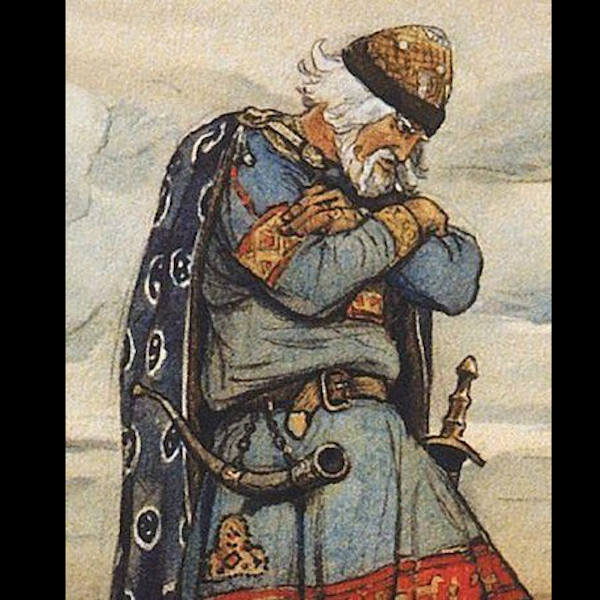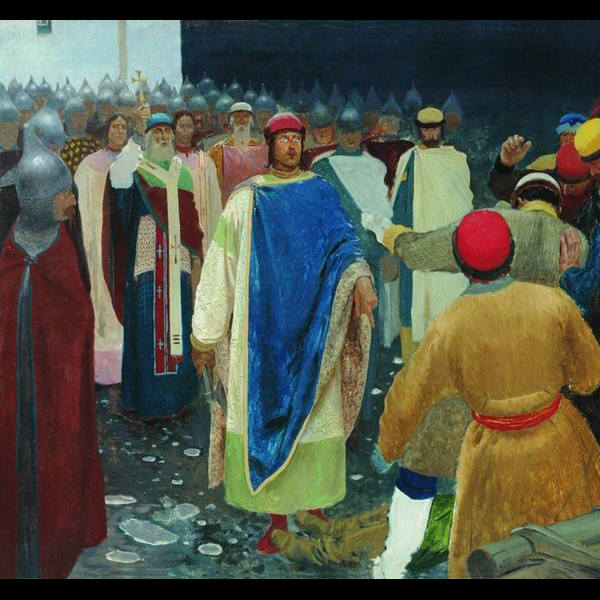DNA spotlight
Gleb Svyatoslavich Prince of Novgorod

Rowing down the great rivers of Eastern Europe on the decks of dragon-headed longboats, Swedish Vikings (known by the Slavic tribes as Rus for rowing) found these lands irresistable - there was no centralized control, tons of wealth to trade and raid and very long rivers to navigate. The Norsemen would raid Slavic villages and capture slaves to sell in the southern markets. Before 860 AD, the Slavs, Balts and Finns revolted against the Swedish masters. However after falling back into disorganized chaos, the Slavic people asked the Varangian Rus to send a Prince to rule over them and bring back order. Rurik (shown here) was this prince and settled in 862 AD.

Rurik built a stronghold and trade center which became known as Novgorod. After his death, his Varanganian kinsman Oleg (shown above) united all the tribes of the north including Norse, Finnic and Slavic warriors and sailed along the Dnieper River towards Kiev which he seized from local warlords for its strategic location and fertile lands. By 885 AD, Oleg had united most of the Eastern Slavs under his rule based in Kiev. This was the birth of the Kievan Rus state which survived for 3 centuries as one of the most prosperous realms in medieval Europe. Over time, all of the people whether Nordic or Slavic became known as Kievan Rus.

A century later, the Kievan Rus ruler Vladimir the Great wanted to expand ties with Byzantium which led to adopting their religion and alphabet. Vladimir's son Yaroslav the Wise greatly expanded the prosperity of the Kievan Rus state by creating Ukraine's oldest body of codified laws marking the Golden Age. Sviatoslav was the fourth son of Yaroslav the Wise with his wife Ingegerd of Sweden. Yaroslav had bequeathed him the territory of Chernigov Ukraine. Prince Sviatoslav became the Grand Prince of Kiev - in turn he appointed his own son Prince Gleb Syvatoslavich as ruler over Novogrod and Tmutarakan.

Gleb successfully suppressed a rebellion incited by a sorcerer against the bishop of the town. The sorcerer claimed he could foretell the future so Gleb dared him to predict what would happen that very same day. The magician answered he would perform great miracles so Gleb pulled out an axe and killed him on the spot. After his father - who was now the Grand Prince of Kiev - died in 1076, the citizens of the town revolted and dethroned Gleb. He was expelled from Novgorod and killed in battle by the Baltic-Finnic tribe known as the Chudes. His remains were buried in a sarcophagus in the backyard of the Saviour's Chernihiv cathedral in Chernihiv Ukraine - the upper plate of the sarcophagus was approximately 2 meters below the modern surface. Analysis shows he died between 25-35 years of age with sword wounds on his skull.
Gleb Svyatoslavich Prince of Novgorod Rurik Dynasty
- Sample ID: VK542
- Year: 1078 AD
- Sex: Male
- Location: 51.489014,31.307778
